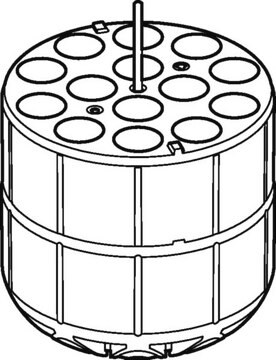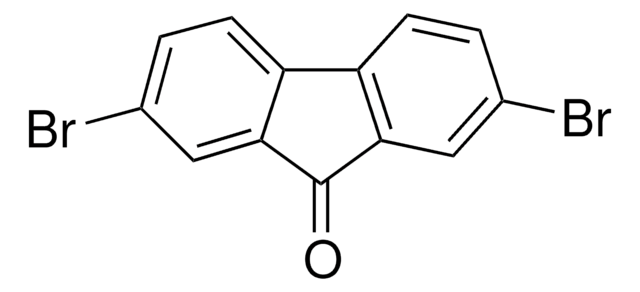All Photos(2)
About This Item
Empirical Formula (Hill Notation):
C13H9NO
CAS Number:
Molecular Weight:
195.22
EC Number:
MDL number:
UNSPSC Code:
12352100
PubChem Substance ID:
NACRES:
NA.22
Recommended Products
Assay
95%
mp
138-140 °C (lit.)
SMILES string
Nc1cccc2C(=O)c3ccccc3-c12
InChI
1S/C13H9NO/c14-11-7-3-6-10-12(11)8-4-1-2-5-9(8)13(10)15/h1-7H,14H2
InChI key
FFWCEONGEXZNFU-UHFFFAOYSA-N
Application
4-Amino-9-fluorenone was used in a study on determination of major contaminants in water samples from gas plant by using particle beam interface LC-coupled to a single quadrupole mass spectrometer. It was used as starting reagent for the synthesis of 4-methoxy-9-fluorenone.
Signal Word
Warning
Hazard Statements
Precautionary Statements
Hazard Classifications
Eye Irrit. 2 - Skin Irrit. 2 - STOT SE 3
Target Organs
Respiratory system
Storage Class Code
11 - Combustible Solids
WGK
WGK 3
Flash Point(F)
Not applicable
Flash Point(C)
Not applicable
Personal Protective Equipment
dust mask type N95 (US), Eyeshields, Gloves
Certificates of Analysis (COA)
Search for Certificates of Analysis (COA) by entering the products Lot/Batch Number. Lot and Batch Numbers can be found on a product’s label following the words ‘Lot’ or ‘Batch’.
Already Own This Product?
Find documentation for the products that you have recently purchased in the Document Library.
Particle beam LC/MS screening of polar compounds of contaminated ground water samples from a former gas plant.
Edler BC, et al.
Fresenius Journal of Analytical Chemistry, 359(3), 288-292 (1997)
S Dei et al.
Bioorganic & medicinal chemistry, 9(10), 2673-2682 (2001-09-15)
Several ring-substituted derivatives of previously studied MDR inhibitors 2-(3,4-dimethoxyphenyl)-5-(9-fluorenylamino)-2-(methylethyl)pentanenitrile and 2-(3,4-dimethoxyphenyl)-5-[(9-fluorenyl)-N-methylamino]-2-(methylethyl)pentanenitrile have been synthesised and studied with the aim of optimising activity and selectivity. The results show that MDR inhibition is scarcely sensitive to modulation of the electronic properties of
Our team of scientists has experience in all areas of research including Life Science, Material Science, Chemical Synthesis, Chromatography, Analytical and many others.
Contact Technical Service









